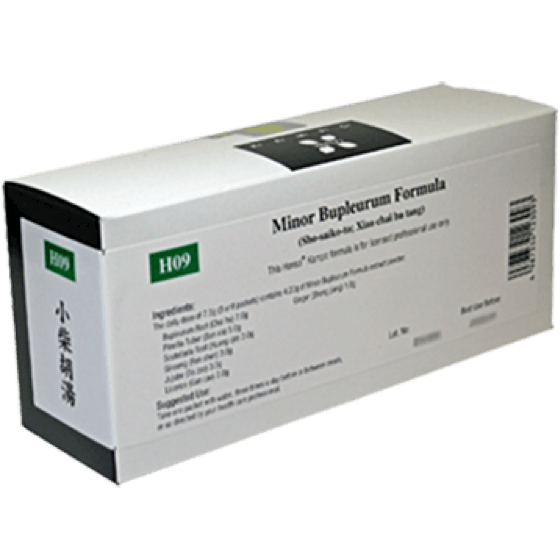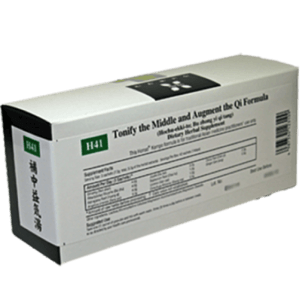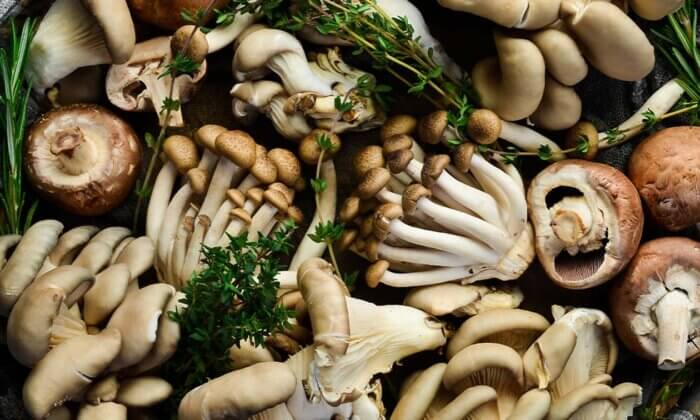How to Quell Persistent Flu Symptoms With Chinese Herbs
Flu Season is not over, but could be out of your system sooner with TCM
| | Reading Time: 5 minutes

This March, I was in Southern California to teach a course on integrative anti-tumor immunity. But because many cases of the flu were not responding to standard treatment, I was called upon to treat patients with my Traditional Chinese Medicine perspective. This flu season was the worst in a decade, and is still making people sick. California was particularly hard hit by this year’s H3N2 epidemic. Luckily, Californians tend to have the access and openness to use TCM herbal formulas like Minor Bupleurum and Ginseng to beat the flu.
Cathleen, one of my long-time patients, was one of many who succumbed to this epic flu. She is a vibrant 55-year-old with a brilliant career in dance and choreography, and the lean muscular body to prove it, never got sick. But when I saw her, she had a hacking dry cough that she couldn’t shake.
Besides the ragged cough, some days she had a fever, but other days her temperature was normal. Every day she felt increasingly unwell. She was weak and tired – drained from coughing and lack of sleep.
Cathleen took vitamin C and zinc, kept up her fluids, and rested. She would feel better for a few days, then relapse. After nearly three weeks of uncontrollable coughing, she bundled up and went to urgent care. She got antibiotics. They didn’t work. When I saw her, she had been to urgent care three times. Other antibiotics didn’t work either. She was stressed, drained, and spent.
Another patient in San Diego emailed me. She had a high fever for twenty days. Antibiotics didn’t help. She took steroids for three days that helped to clear up some of her chest inflammation. But after more than three weeks of being sick, she had no energy and felt “in a cloud.”
Then another patient, this one in Chicago, email about a “monster flu from hell” that put her in bed for a week. Now she had persistent nausea that wouldn’t go away.
Unrelenting Flu Symptoms
The peak was over in mid-January, but the worst flu season in a decade was far from finished. Widespread activity continued. Outpatient hospital care remained elevated.
Influenza A, H3N2 dominated earlier in the season, but by March H1N2 was making people sick. Symptoms are similar between the two strains but worse with H3N2.
Doctors had to finally admit that this year’s flu vaccine worked reasonably well to prevent H1N1, but was less than 30 percent effective against H3N2.
The trend was clear. As influenza A H3N2 and H1N1 cases decreased, the incidence of influenza B increased. By March 23, influenza B dominated accounting for half of all infections.
High levels of drug resistance persisted against neuraminidase blockers (the antiviral drugs oseltamivir, zanamivir, and peramivir), that are used commonly for Influenza A viruses H1N1 and H3N2, and for Influenza B. Another class of antivirals, Adamantanes (amantadine and rimantadine), are not effective against influenza B viruses. To make things worse, the 2017-2018 H3N2 and H1N1 strains were 99% resistant to adamantanes.
In March, all of California still had widespread influenza activity. Hospitalizations were above expected levels. Influenza A decreased, but influenza B persisted. No slowdown in activity is expected for several more weeks. In fact, a second wave of flu is predicted. The number of cases in 2017-18 was doubled compared to 2013-2016. Hospitalizations peaked in January, but the high level of infectivity persisted.
Because of drug resistance, antivirals are not prescribed. Antibiotics are not effective against viruses, so are infrequently prescribed.
Patients were sent home with instructions to stay hydrated, get rest, and manage fever with ibuprofen or acetaminophen. I additionally recommend using immune boosting supplements to reduce flu symptoms.
Which Influenza Is Making You Sick?
It’s hard to tell what kind of flu you have based on symptoms alone. All have similar symptoms and signs including fever, low white blood cell count, and elevated C-reactive protein. Muscle aches and pains and other symptoms such as a headache, general malaise, and sore throat are equally frequent in influenza A H3N2, A H1N1, and B infections. In general, influenza A H3N2 virus caused more severe symptoms than A H1N1 or influenza B.
Influenza can also cause “the stomach flu.” Symptoms are abdominal cramps, vomiting, diarrhea, and nausea. Gastrointestinal symptoms are more common in influenza B that with A types.
Though the worst of this year’s flu season is nearly over, those who are getting sick late in the season seem to have stronger symptoms.
Natural Treatment of Choice for Lingering Flu
Minor Bupleurum
The treatment of choice for lingering influenza is Minor Bupleurum or Xiao Chai Hu Tang. This classic traditional Chinese herbal formula combines herbs to boost immunity, restore energy, sooth coughing, and dampen inflammation. The primary herb in this formula is Bupleurum, considered to harmonize the liver and balance the interior of the body with the outside.

With more than 2,000 years of use in Traditional Chinese Medicine, Bupleurum chinense (Chai Hu) is one of the most important herbs for regulating inflammation caused by viral infections. Scientist found that it contains saikosaponins, which are compounds that have potent anti-inflammatory properties capable of inhibiting NF-kappaB.
Bupleurum saikosaponins have a combination of effects. They inhibit influenza virus activity and reduce inflammation in the lungs. No drug has such synergistic effects.
For severe and lingering flu symptoms, the anti-inflammatory action of Bupleurum is just the remedy that patients need.
If you are not better in ten days after catching the flu, or if you start to get better, but flu symptoms return, take Minor Bupleurum.
Ginseng
Lingering, persistent influenza symptoms cause extreme fatigue, weakness, and shortness of breath. In this case, one needs to boost the body’s intrinsic energy; to boost one’s Qi. While at the same time, gently modulating inflammation. To treat persistent flu symptoms the best choice of herbal medicine is ginseng.
Ginseng is usually thought of as an energy stimulant. That’s true, but it has many other properties, including the ability to beat the flu. Ginseng interferes with viral attachment to respiratory tract tissue, which keeps the virus from spreading.
Minor Bupleurum contains ginseng. However, if flu symptoms persist for more than three weeks, more ginseng is necessary to support viral immunity.
The TCM herbal formula of choice is Tonify the Middle and Augment the Qi.

How to take TCM Herbal Formulas
From my professional experience, the best way to take Chinese medicine is as a traditional slow-cooked medicinal tea. Since most don’t have access to a traditional Chinese herbal pharmacy, laboratory prepared granules are available.
I prefer Honso Kampo formulas by TCMzone.
This US company partnered with one of the top GMP certified herbal manufacturers in Japan. Honso produces standardized granule formulas of the highest quality.
Dissolve two packets in a cup of warm water and drink three times daily for two weeks. For stubborn cases of the flu, use two packs four times daily. Herbal formulas are best taken between meals on an empty stomach.
For lingering flu symptoms with extreme fatigue, take one packet of Minor Bupleurum and one packet of Tonify the Middle herbal formulas, three times daily.
Minor Bupleurum and Tonify the Middle herbal formulas have no known adverse effects.
Get as much rest as you can, and beat the flu!


